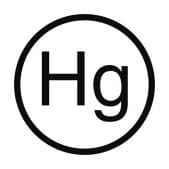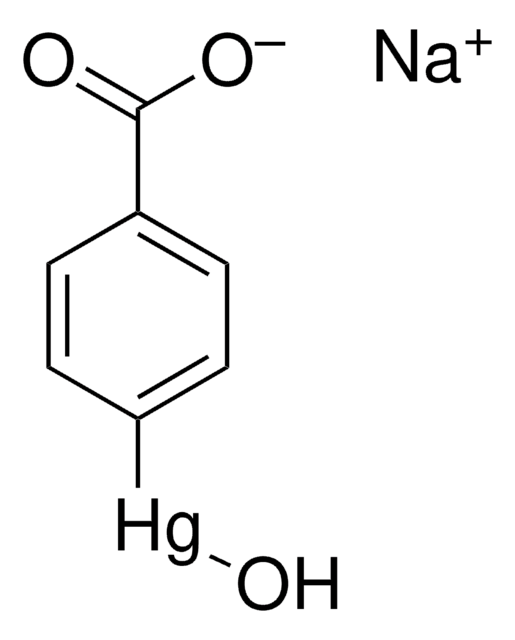M9784
Mersalyl acid
analytical standard
Sinonimo/i:
2-(3-Hydroxymercurio-2-methoxypropylcarbamoyl)phenoxyacetic acid, 2-[N-(3-Hydroxymercuri-2-methoxypropyl)carbamoyl]phenoxyacetic acid, Salyrganic acid
Scegli un formato
About This Item
Prodotti consigliati
Grado
analytical standard
Livello qualitativo
Saggio
≥85% (TLC)
tecniche
HPLC: suitable
gas chromatography (GC): suitable
Punto di fusione
192-193 °C (dec.) (lit.)
Solubilità
NH4OH: soluble, clear to hazy
applicazioni
forensics and toxicology
pharmaceutical (small molecule)
veterinary
Formato
neat
Stringa SMILE
COC(CNC(=O)c1ccccc1OCC(O)=O)C[Hg]O
InChI
1S/C13H16NO5.Hg.H2O/c1-9(18-2)7-14-13(17)10-5-3-4-6-11(10)19-8-12(15)16;;/h3-6,9H,1,7-8H2,2H3,(H,14,17)(H,15,16);;1H2/q;+1;/p-1
HQRSUIDICNOLPX-UHFFFAOYSA-M
Cerchi prodotti simili? Visita Guida al confronto tra prodotti
Applicazioni
Esclusione di responsabilità

Avvertenze
Danger
Indicazioni di pericolo
Consigli di prudenza
Classi di pericolo
Acute Tox. 1 Dermal - Acute Tox. 2 Inhalation - Acute Tox. 2 Oral - Aquatic Acute 1 - Aquatic Chronic 1 - STOT RE 2
Codice della classe di stoccaggio
6.1A - Combustible acute toxic Cat. 1 and 2 / very toxic hazardous materials
Classe di pericolosità dell'acqua (WGK)
WGK 3
Punto d’infiammabilità (°F)
Not applicable
Punto d’infiammabilità (°C)
Not applicable
Dispositivi di protezione individuale
Eyeshields, Faceshields, Gloves, type P3 (EN 143) respirator cartridges
Scegli una delle versioni più recenti:
Possiedi già questo prodotto?
I documenti relativi ai prodotti acquistati recentemente sono disponibili nell’Archivio dei documenti.
Active Filters
Il team dei nostri ricercatori vanta grande esperienza in tutte le aree della ricerca quali Life Science, scienza dei materiali, sintesi chimica, cromatografia, discipline analitiche, ecc..
Contatta l'Assistenza Tecnica.











